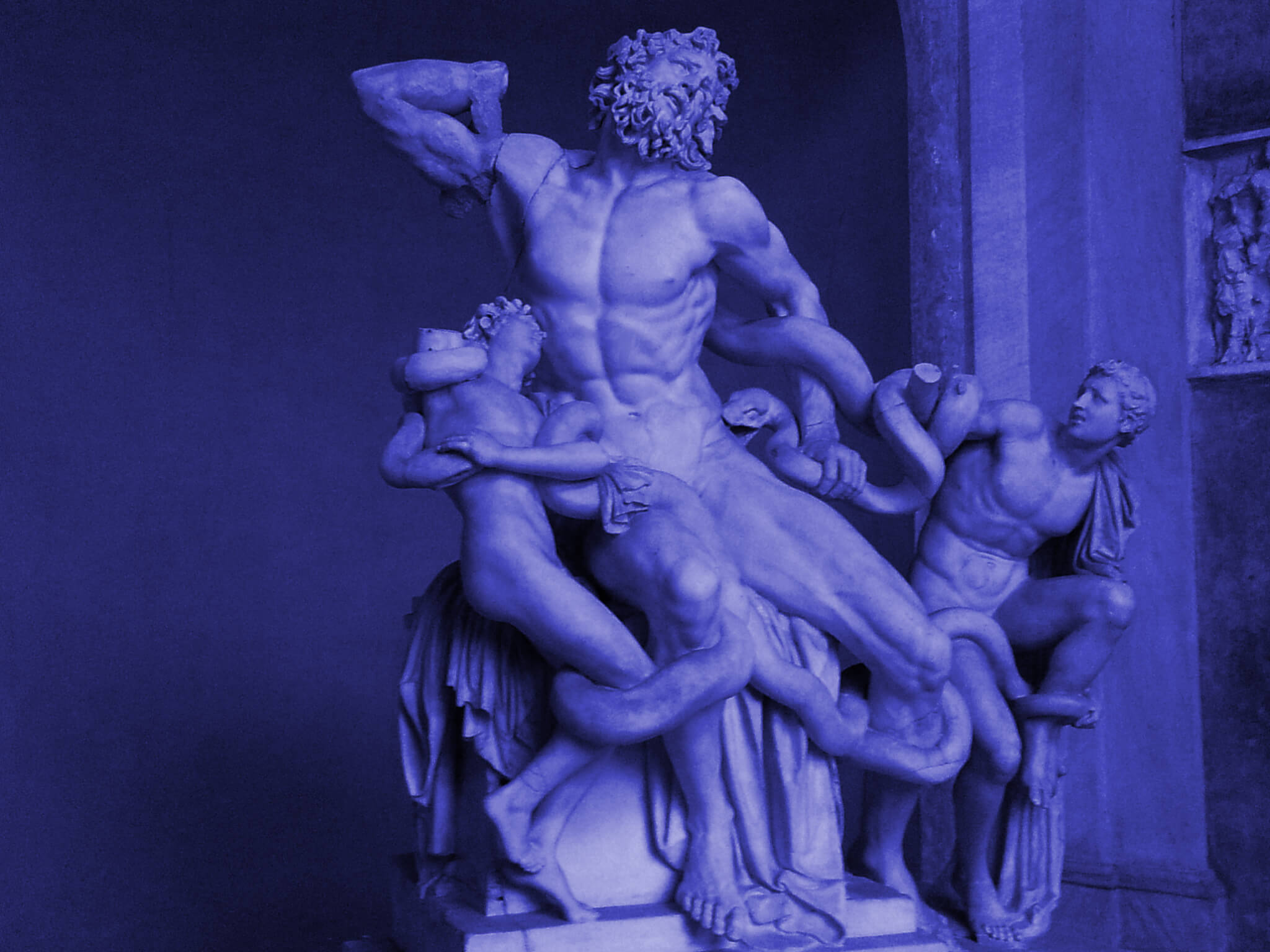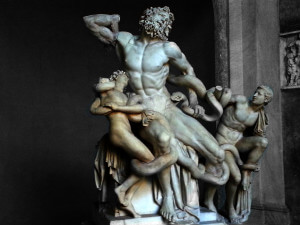 The Trojan Era was a time of high drama. The Iliad, the Odyssey, and the Aeneid bring the age to life.
The Trojan Era was a time of high drama. The Iliad, the Odyssey, and the Aeneid bring the age to life.
Here a lost story reveals itself as – Unredeemed agony.
The Legend of Laocoon wikipedia:
Though not mentioned by Homer, the story of Laocoön had been the subject of a tragedy, now lost, by Sophocles and was mentioned by other Greek writers. Laocoön was a Trojan priest of Poseidon who was killed with both his sons after attempting to expose the ruse of the Trojan Horse by striking it with a spear. The deaths were interpreted by the Trojans as proof that the horse was a sacred object.
The most famous account of these events is in Virgil‘s Aeneid (see the Aeneid quotation at the entry Laocoön), but this dates from between 29 and 19 BC, which is possibly later than the sculpture. However, some scholars see the group as a depiction of the scene as described by Virgil.[13] The snakes are depicted as both biting and constricting, and are probably intended as venomous, as in Virgil.[14] Pietro Aretino thought so, praising the group in 1537:
…the two serpents, in attacking the three figures, produce the most striking semblences of fear, suffering and death. The youth embraced in the coils is fearful; the old man struck by the fangs is in torment; the child who has received the poison, dies.[15]

